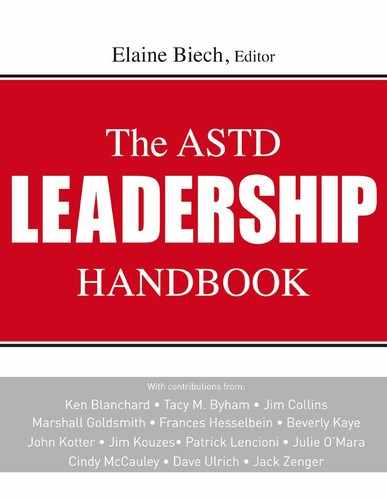 Section V
Section V
Broadening the Leadership Discussion
The vision for this handbook is to include several chapters that take our readers outside the normal paradigms of corporate leadership—beyond the typical boundaries of how to lead, whom to lead, and what to lead. Thus, this section reflects our search for ideas that might stretch our thinking and explores leadership from a potpourri of perspectives.
We hope the wisdom expressed in the five chapters of this section gives you pause to think. There are thousands of books about leadership. Indeed, this handbook presents chapters by several of the top authors in the field. Yet at the same time, those of us who are concerned about leadership development and leadership in the future would do well to focus our attention on areas other than the corporate halls of business.
An effective creativity technique used to see problems or issues from different perspectives is to ask “How would ______ view this problem?” For example, we could ask “What leadership lessons can we learn about . . .
- charisma from the Dalai Lama in the foothills of the Himalayas?”
- talent management from a preschool class?”
- enabling others to act from staff at a top-notch nursing home?”
- building trust from firefighters, the most trusted occupation?”
You could pose dozens of other questions. But the idea is to look at leadership from another perspective.
In the next five chapters, the authors challenge us to consider what can be learned from the military about development, from public-sector leadership challenges, and from adolescents in Ghana. They also dare us to answer questions such as: Should we begin to give employees opportunities to lead earlier in their careers? How can we support leadership skills training in primary and secondary schools in all the countries of the world? What can private industry learn from the challenges of the public sector? What kind of a world should leaders be prepared for in 2020? What can we learn from the difficulties of Chinese leaders? As you ponder these kinds of thought-provoking questions, read the chapters in this section realizing that while this is the end of the handbook, it is just the beginning for your learning.
In chapter 29, “Why Leadership Development Should Go to School,” Lyndon Rego, Stead-man Harrison, and David Altman explore the need for educational systems worldwide to create an added emphasis on leadership skills, creativity, emotional intelligence, and other personal skill development that extends beyond academics and technical knowledge.
In chapter 30, “Growing Tomorrow’s Leaders for the Worlds of 2020,” Lawrena Colombo and John Verderese envision the varied worlds of 2020 that leaders will face and suggest ideas for how to successfully prepare leaders at various stages of their careers and with diverse perspectives to meet the challenges of the future.
In chapter 31, “A Military View of Leadership in the Private Sector,” John Lockard, a retired three-star admiral, compares leadership in the private sector with that in military organizations and offers ideas for consideration. He also delineates his nine essentials for leadership based on his experience in the military and the private sector.
In chapter 32, “Leading in the Public Sector,” Will Brown presents practical ideas for how to ensure effective leadership in the public sector (or any other organization that relies on political savvy). He states that it begins with understanding the people and the organization.
In chapter 33, “Chinese ‘Sheng Yi’: Reinterpreting Challenges for Leaders,” Cheng Zhu presents some of the major challenges that Chinese CEOs in private industry face because of inadequate legal, political, and cultural support.
